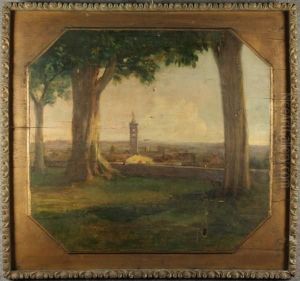Vezzoli Alcide Paintings
Alcide Vezzoli was an Italian artist known for his work as a painter and sculptor, born in 1858 in the town of Travagliato, in the province of Brescia, Lombardy region. He was embedded in the artistic traditions of the late 19th and early 20th centuries, which was a period of significant transformation in the art world, characterized by the transition from traditional academic styles to the emergence of modernism.
Vezzoli showed an early inclination towards the arts and was encouraged to pursue his passion. He received his initial training at the local art institutions and later continued to refine his skills at more prestigious academies, which was a common path for artists of his time. His work was primarily influenced by the Italian artistic heritage, yet he managed to develop his own style that combined classical techniques with a sensitivity to the changing tastes of his era.
During his career, Vezzoli participated in various exhibitions and received accolades for his artistic contributions. He was proficient in both painting and sculpture, which allowed him to express his artistic vision through different mediums. His paintings often featured historical and mythological themes, executed with a fine attention to detail and a rich, vibrant palette. As a sculptor, he was known for his ability to capture the human form with realism and emotion.
The early 20th century was a vibrant time for the arts in Italy, with various movements such as Futurism and Metaphysical painting emerging. Although Vezzoli remained somewhat traditional in his approach, the dynamism of the era inevitably influenced his work. He witnessed the rise of these new art movements, which challenged conventional aesthetics and introduced a spirit of innovation that resonated throughout the art world.
Vezzoli's legacy is preserved through his artworks, which continue to be appreciated for their craftsmanship and classical beauty. He passed away in 1933, leaving behind a body of work that reflects the artistic trends and cultural milieu of his time. His contributions to Italian art were part of the broader European art narrative, bridging the gap between the 19th-century academic tradition and the evolving modernist tendencies of the early 20th century.
